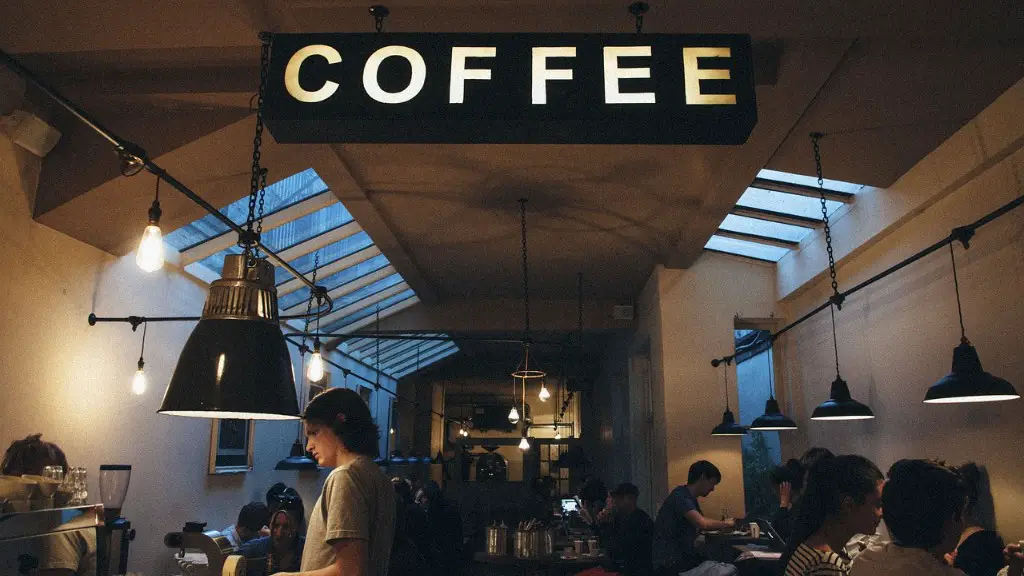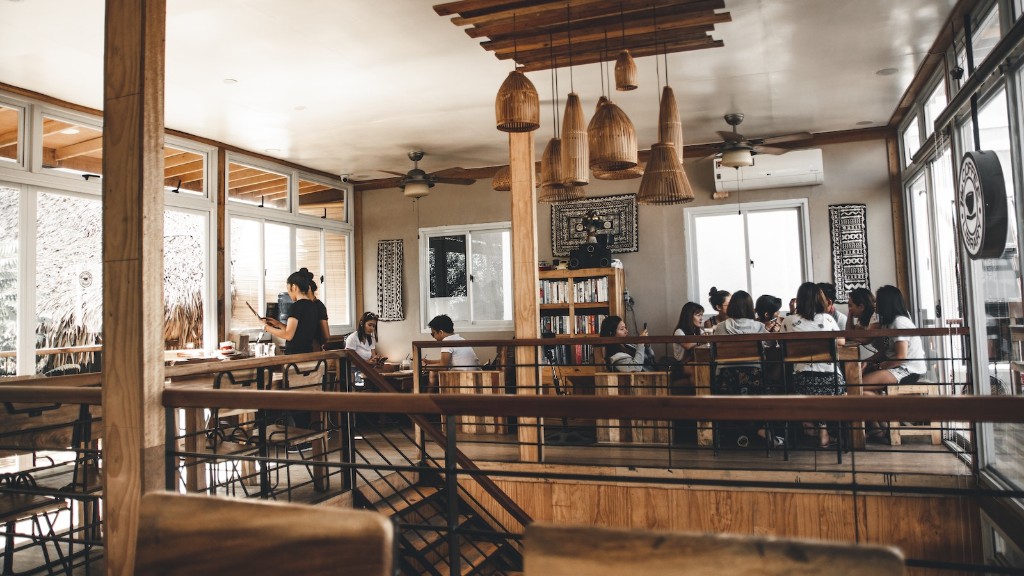Opening a coffee shop can be a great way to indulge your passion for coffee and provide a comfortable gathering place for your community. But before you start serving up cappuccinos and lattes, you’ll need to create a coffee shop business plan. This document will outline your business goals, strategies, and how you plan on making your coffee shop a success.
Your coffee shop business plan should include:
1. An Executive Summary
2. A Company Description
3. A Market Analysis
4. A Competitive Analysis
5. A Sales & Marketing Plan
6. An Operations Plan
7. A Financial Plan
8. Appendices & Exhibits
With these eight key sections, your coffee shop business plan will be well on its way to helping you open a successful coffee shop.
Your coffee shop business plan should include an executive summary, a company description, a market analysis, a competitive analysis, a description of your products and services, a marketing plan, and a financial plan.
Is a coffee shop profitable?
Coffee is a very popular drink and is consumed by people all over the world. It is a drink that is known to have many health benefits and is also known to be very addictive. Coffee shops are a great business model and can be very profitable. The coffee industry is a very large industry and is growing every year.
Opening a coffee shop can be a daunting task, but with careful planning and execution it can be a successful venture. Here are some things you need to take into consideration when opening a coffee shop:
1. Write a business plan – This will help you map out your business goals and objectives, as well as identify your target market and how you will reach them.
2. Find the right location – This is perhaps one of the most important factors in determining your success. The location of your coffee shop should be in a high foot traffic area with good visibility.
3. Develop a floor plan – This will help you maximize the use of your space and create an efficient workflow for your staff.
4. Hire an accountant – A good accountant can help you save money on taxes and keep track of your finances.
5. Find local funding options – There are many options available for financing your coffee shop, such as loans, grants, and investor funding.
6. Save money for your personal expenses – Before you open your coffee shop, make sure you have enough saved up to cover your personal living expenses for at least 6 months.
7. Compare prices and quality on everything – When you’re first starting out,
Do you need a business plan for a coffee shop
A business plan is a document that describes your business, its objectives, strategies, and how you plan to achieve them. It is important to have a business plan when starting a cafe because it will help you map out your goals and track your progress. Creating a business plan can seem complicated, but it is worth taking the time to do it right. Remember to include your cafe’s unique selling points, financial projections, and marketing plans in your business plan. With a well-thought-out business plan, you can prove to others (and yourself) that your cafe has what it takes to be successful.
The average cost to open a single coffee shop with seating is between $80,000 and $300,000. The cost of opening a coffee food truck or kiosk is on the lower end, at around $60,000. Including both seating and drive-thru coffee in your coffee shop will raise the cost to the $300,000+ range.
Is it hard to run a coffee shop?
There are a few key things you can do to increase your chances of success:
1. Find a niche: Don’t try to be everything to everyone – find a niche market and focus on serving them well.
2. Location, location, location: Make sure you choose a good location for your cafe – somewhere with high foot traffic and a good mix of businesses and residences.
3. Get the word out: Make sure you let people know about your cafe – use social media, word of mouth, and traditional marketing techniques to get the word out.
4. Offer something unique: Don’t just offer the same old coffee and pastries – find a way to stand out from the competition with unique offerings.
5. Create a great experience: From the moment people walk in the door, to the time they leave, make sure they have a great experience at your cafe.
By following these tips, you’ll be well on your way to running a successful cafe business.
The statistics for success rates when starting your own business are not the greatest, and “if it were easy, everyone would be doing it!” In general, an average of 80% of all new businesses fail within the first two year of being open. More specifically, in the restaurant industry this failure rate climbs to 95%.
There are a number of reasons why businesses fail, but some of the most common include poor planning, insufficient capital, and unrealistic expectations. If you’re thinking of starting your own business, it’s important to do your research and be realistic about the potential for success. Otherwise, you may end up becoming one of the statistics.
Can I run a café with no experience?
With some careful planning and execution, you can start a coffee shop without any prior experience and be successful. Some important factors to consider include finding the right location, knowing your target market, and having a well-thought-out business plan. If you take the time to do your research and put together a solid business plan, you can increase your chances of starting a successful coffee shop.
It really depends on the size and type of coffee business as to how many baristas you need to hire. For a small coffee shop, 1-4 baristas would be sufficient. For a medium sized coffee shop, 2-7 baristas would be ideal. And for a large coffee shop, 4-12 baristas would be necessary. Drive-thru stands typically need 4-7 baristas on staff.
How much capital is needed for a coffee shop
A sit-down coffee shop typically costs between $80,000 and $275,000 to set up. A large drive-through shop can cost between $80,000 and $200,000. A small kiosk may cost between $60,000 and $100,000.
The cost of setting up a coffee shop depends on the size and type of shop. A small kiosk may be the cheapest option, while a large drive-through shop may be the most expensive.
Before starting a coffee shop, it’s important to do your research and understand the costs involved. This will help you create a realistic budget and make informed decisions about your business.
The average profit for a small cafe is about 25 percent. Large coffee operations tend to earn much higher profits. Direct costs average about 15 percent. So most of a small coffee shop’s expenditures go toward overhead expenses. Building sales volume makes a small cafe more profitable.
What Licence do I need to open a coffee shop?
So, it really depends on your coffee shop and what type of classification it falls under. If it’s A3, then it’s likely that you’ll be able to serve food and drinks, but if it’s A1, then you’ll be limited to just selling coffee.
When you first set up a business there are various people you need to register with:
– your local authority
– HMRC
– Business Insurance
– Gas / Electrical Safety Certificates
– Food Hygiene Certificate
– Undertake a risk assessment
– Food Hygiene Rating Scheme (FHRS)
Can I start a coffee shop with 10000
If you’re thinking about starting a coffee business, the cost can vary widely depending on the type of business you want to start. For an espresso catering business, you can expect to spend around $5,000 to $12,000 to get started. For a coffee stand business, the cost can be anywhere from $10,000 to $150,000. And for a coffee truck business, the cost can range from $20,000 to $90,000. So, it’s important to do your research and figure out which type of business is right for you and your budget.
If you are looking to open a café on a low budget, there are a few things to consider:
#1 Do Extensive Research
Make sure you do your research before diving into opening a café. Understand the industry and what it takes to be successful.
#2 Design a Business Plan
Create a detailed business plan that outlines your concept, target market, and financial goals. This will be your roadmap to success.
#3 Select a Prominent Location
Choose a high-traffic location for your café. This will help draw in customers and help you reach your business goals.
#4 Decide the Funding Based on Tax Structure
Consider the tax implications of your funding sources. This will help you keep your costs low and stay within your budget.
#5 Search for the Suppliers
Look for suppliers who can provide you with quality products at a low cost. This will help you keep your café running smoothly.
#6 Give a Structure to Your Café
Organize your café in a way that is efficient and effective. This will help you save money and time in the long run.
#7 Marketing
Develop a marketing plan that will help you reach your target market. This will help
How do coffee shops calculate profit?
Your coffee shop profit margin is the total revenue minus the startup and operational costs. Of course, if you’re calculating the daily profit margin, you won’t have to include the startup costs in the equation.
Some coffee shop owners say that there will be times – many times – when you will not have enough to pay your employees, your bills, and yourself at the same time. There may be weeks when you have to work 60 – 80 hours a week and have absolutely nothing left to pay yourself.
Warp Up
A coffee shop business plan should include the following:
1. Introduction:
A brief introduction to your coffee shop business plan that outlines your business concept and what you hope to achieve.
2. The Market:
An analysis of the coffee shop market, including a description of your target customer base and your competition.
3. The Business:
A description of your coffee shop business, including your business model, your unique selling proposition, and your plans for growth.
4. The Finances:
A detailed financial plan, including your start-up costs, your expected revenues and expenses, and your financial goals.
5. The Implementation:
A step-by-step plan for launching your coffee shop business, from finding the perfect location to training your staff.
6. The Risk Factors:
A discussion of the risks involved in starting a coffee shop business, from the cost of coffee to the possibility of competition.
7. The Exit Strategy:
A plan for how you will eventually sell or pass on your coffee shop business, whether you plan to retire or sell to another entrepreneur.
If you’re planning on opening a coffee shop, you’ll need to put together a solid business plan. This should include your financial goals, a marketing strategy, and a detailed description of your café. You’ll also need to choose a good location, find the right suppliers, and make sure you have the proper licenses and permits. With a little hard work and a lot of research, you can make your dream of owning a coffee shop a reality.





